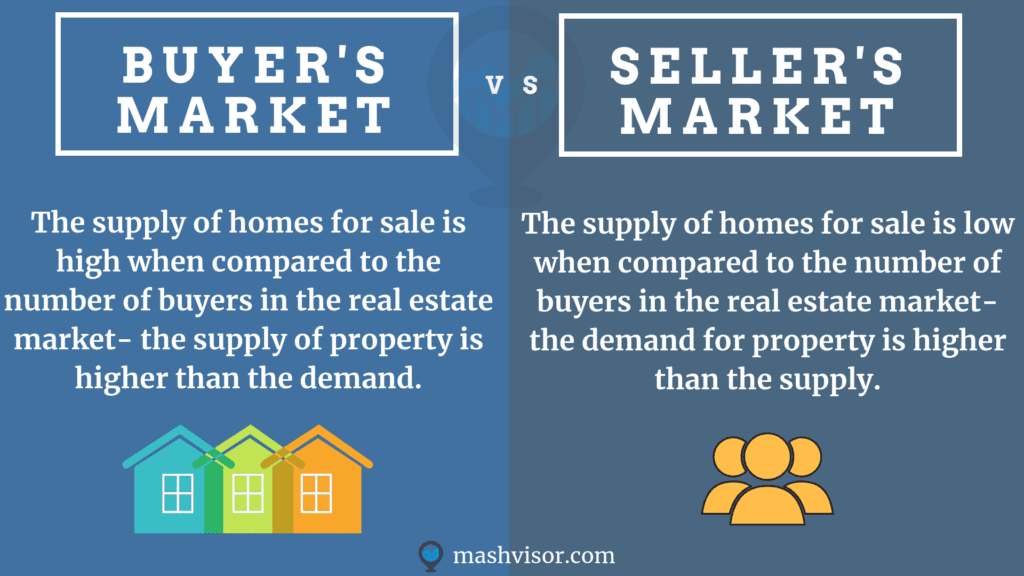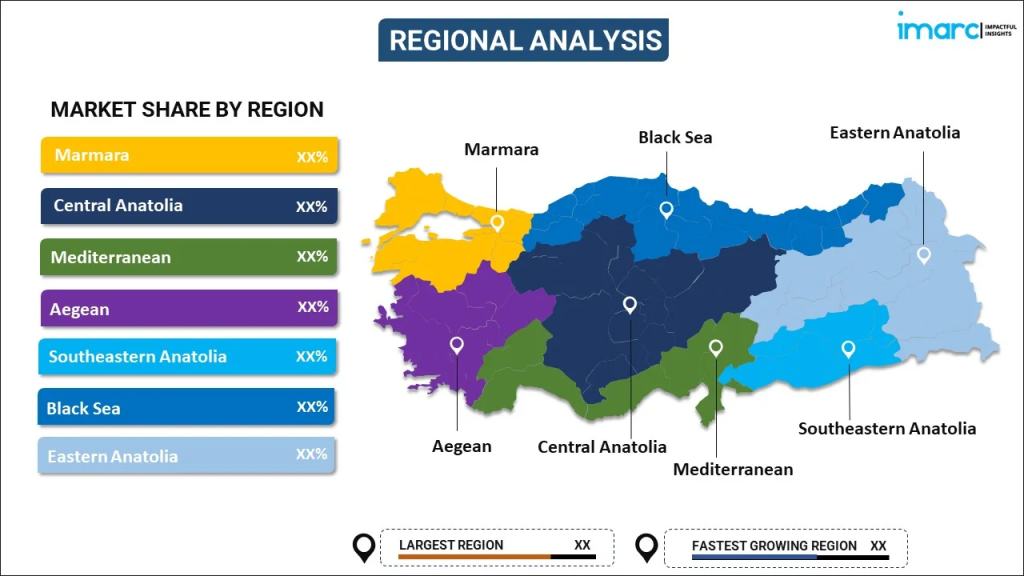本地(欧洲特定)内容:欧洲买方市场与卖方市场
课程学习目标:
- Understand the differences between a Buyers’ Market and a Sellers’ Market in Europe, identifying how economic conditions, supply, and demand influence market dynamics and negotiation power.
- Explore the distinctions between Local and National Markets in Europe, examining how property values and market conditions can vary significantly within a country.
- Differentiate between the Residential and Commercial Markets in Europe, assessing how factors like economic hubs and tourism influence these sectors.
- Compare the New Home Market versus Previously Lived-In (Resale) Properties in Europe, understanding the advantages and challenges associated with each.
- Distinguish between Investment Properties and Properties for End Users in Europe, recognizing the different factors that appeal to investors and personal buyers.
8.1 Buyers' Market vs. Sellers' Market in Europe
Buyers’ Market
A 买方市场 occurs when the supply of real estate exceeds demand, giving buyers greater leverage in negotiations. In European cities like Madrid 和 Athens, economic slowdowns or overbuilding can lead to buyers’ markets, where properties stay on the market longer and buyers can negotiate lower prices or better terms.
Sellers’ Market
A 卖方市场 happens when demand for real estate exceeds supply, allowing sellers to raise prices and have the upper hand in negotiations. Cities like Berlin, Paris, 和 Amsterdam often experience sellers’ markets due to limited housing supply and high demand driven by population growth, economic stability, and immigration.
数字: Deciphering Market Dynamics: Buyer’s vs. Seller’s Market
描述:
The infographic sheds light on the distinctive features of a buyer’s market and a seller’s market in the context of the housing industry. Each market type is likely illustrated with unique characteristics, potential outcomes, and recommended strategies.
要点:
- 市场动态清晰:该图形区分了买方市场的有利于买方的条件和卖方市场的有利于卖方的条件。
- 标准重点:可以详细说明库存水平、供需平衡和潜在定价策略等关键指标,以辨别两种市场类型。
- 策略洞察:根据当前的市场状况,该信息图可以为买家或卖家提供量身定制的可行建议。
- 教育概况:该视觉图片为房地产爱好者提供了全面的指南,帮助他们更有效地了解房地产市场。
信息应用:
Recognizing whether it’s a buyer’s or seller’s market is paramount for real estate investors, agents, and potential homeowners. Graphics like this demystify complex market dynamics, helping stakeholders to strategize better and make well-informed decisions. From setting the right property price to understanding the best time to buy, such insights empower individuals to optimize their real estate endeavors.
8.2 Local vs. National Market in Europe
本地市场
这 local real estate market refers to a specific city, town, or region. In Europe, local markets can vary dramatically within the same country. For instance, property prices in London can be far higher than in other parts of the U.K. Similarly, local market trends in Berlin may differ significantly from trends in Munich 或者 Hamburg.
全国市场
这 national real estate market represents the overall property market trends across an entire country. In France, for example, the national market may reflect general housing trends, but individual local markets, such as Paris vs. Marseille, can differ in terms of supply, demand, and price movements.
数字: Regional Analysis of Turkey’s Real Estate Market
描述:
This map illustrates the market share of real estate regions in Turkey, highlighting key geographical divisions: Marmara, Central Anatolia, Mediterranean, Aegean, Southeastern Anatolia, Black Sea, 和 Eastern Anatolia. Each region is color-coded to represent its contribution to the real estate market, with markers indicating the largest region 和 fastest-growing region. This analysis enables a clear understanding of Turkey’s regional real estate dynamics.
要点:
- 这 Marmara region, home to Istanbul, dominates the real estate market due to its economic significance.
- Central Anatolia 和 Mediterranean regions follow as important contributors, driven by urban development and tourism.
- 这 fastest-growing region reflects areas with increasing infrastructure investments and economic opportunities.
- Regional diversity in Turkey showcases varied demand patterns influenced by factors like geography, population density, and economic activities.
- 这 Black Sea 和 Eastern Anatolia regions hold smaller shares but may present untapped potential for investors.
信息应用:
This regional breakdown is invaluable for real estate developers, investors, and policymakers aiming to understand the geographical distribution of opportunities and challenges in Turkey’s real estate market. By identifying key regions for growth and development, stakeholders can make informed decisions about market entry, resource allocation, and regional strategies.
8.3 Residential vs. Commercial Market in Europe
住宅市场
这 residential real estate market includes properties purchased for personal use or rental purposes, such as single-family homes, apartments, and condominiums. In cities like Barcelona 和 Rome, the residential market is heavily influenced by factors such as job growth, immigration, and tourism.
商业市场
这 commercial real estate market includes properties used for business purposes, such as office buildings, retail spaces, and warehouses. Cities like Frankfurt 和 London are known for strong commercial markets due to their status as global financial hubs. Commercial properties in these cities tend to have higher rental yields but can also require significant capital investments.
数字: Projected Real Estate Performance in Europe by Sector (2022)
描述:
This bar chart compares real estate sector performance projections in Europe across six categories: Residential, Logistics, Average, Office, Shopping Centre, and High Street. The data is represented for March 2022 base case, September 2022 downside, September 2022 base case, 和 September 2022 upside scenarios. Key trends show that Logistics consistently outperforms other sectors in all scenarios, while High Street retail demonstrates challenges with negative projections in the downside scenario. The Residential sector remains stable across all projections.
要点:
- Logistics shows strong resilience and growth potential, reflecting the demand for warehousing due to e-commerce expansion.
- Residential real estate remains a stable investment across all scenarios, providing steady returns.
- Office spaces 和 shopping centres face mixed outcomes, with performance varying significantly between the base case and downside scenarios.
- High Street retail is the most vulnerable sector, with negative projections under the downside scenario due to shifting consumer preferences.
- Upside scenarios suggest potential recovery or growth in several sectors, driven by economic stability and market adjustments.
信息应用:
Investors and developers can use this data to identify resilient sectors like logistics and residential real estate, prioritizing investment in these areas for long-term returns. The chart also highlights sectors requiring cautious approaches, such as High Street retail, emphasizing the need for risk assessment and diversification strategies in uncertain market conditions.
8.4 New Home vs. Previously Lived-In (Resale) Properties in Europe
New Home Market
这 new home market refers to newly built properties. In cities like Dublin 和 Vienna, new construction homes are attractive to investors due to modern amenities and energy efficiency. However, new homes often come at a premium, and the location of new developments may be outside city centers.
Previously Lived-In Market
这 previously lived-in market (resale properties) includes homes that have already been occupied. These properties can be more affordable than new construction, especially in well-established neighborhoods with existing infrastructure. In older European cities, such as Prague 和 Brussels, many resale properties retain historical value, adding to their appeal.
8.5 Investment Property vs. Property for End User (Investor) in Europe
Investment Property
一个 investment property is purchased with the intent to generate income through rentals or appreciation. In markets like Amsterdam 和 Paris, investment properties are in high demand, particularly in areas popular with tourists or expatriates. Investors focus on rental yields, appreciation potential, and tax advantages.
Property for End User
A property for an end user is typically purchased by the buyer for personal use. Buyers in cities like Zurich 或者 Copenhagen might prioritize factors such as neighborhood amenities, school districts, and long-term livability. End users may be less concerned about rental income and more focused on building equity over time.
主要课程信息:
- 在一个 买方市场, properties may stay on the market longer, providing buyers with leverage to negotiate more favorable terms, particularly in cities experiencing economic slowdowns like Madrid and Athens.
- A 卖方市场 is characterized by limited property supply and high demand, which can drive up prices and reduce negotiation leverage for buyers, common in cities like Berlin and Paris.
- 这 住宅市场 is generally influenced by local economic factors such as job growth and immigration, while the 商业市场 relies more on global financial dynamics and corporate presence, especially in major cities like Frankfurt and London.
- New Homes often offer modern amenities and energy efficiency but may come at a higher price and be located further from city centers, whereas Resale Properties might offer more affordability and established neighborhoods.
- Investment Properties are typically focused on generating income and may be located in tourist-heavy or expatriate-friendly areas, whereas Properties for End Users are chosen based on personal use, emphasizing factors like neighborhood quality and proximity to schools.
结语:
Grasping the complex nature of Europe’s real estate market is essential for making informed investment decisions and strategic planning. This section equips you with the knowledge to navigate through various market conditions, whether you are buying, selling, or investing.





